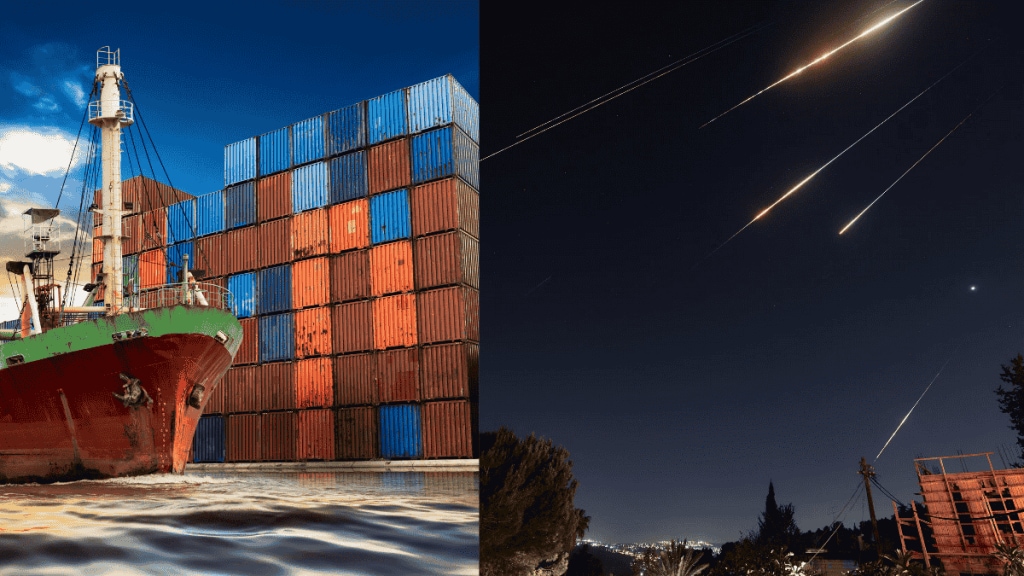With tension rising across West Asia due to the ongoing conflict between Iran and Israel, there is a pall of cloud hanging over India’s two major connectivity projects, Chabahar Port in Iran and the India-Middle East-Europe Economic Corridor (IMEC).
According to a report by PTI, the government is closely monitoring the situation arising from the Iran-Israel conflict. It is set to meet shipping lines, container firms, and other stakeholders this week to assess the impact on the country’s overseas trade and address any issues.
India, so far, has had good ties with both nations, Iran and Israel. Israel supplies defence equipment, and Iran promises connectivity through the Chabahar port.
Chabahar, which handles at least 1.9 million metric tons of cargo, now at risk?
India has committed nearly Rs 1,000 crore (about $120 million) to develop the Shahid Beheshti terminal at Chabahar Port, as Financial Express reported previously. In May 2024, India signed a 10-year agreement with Iran, gaining long-term operational control of the terminal.
Is this investment and trade route to Afghanistan and Central Asia, bypassing Pakistan, which does not permit Indian transit access, under threat?
According to annual report of The Ministry of water, shipping and waterways (2024-25), Chabahar Port has handled over 60,000 TEUs of container cargo and 1.9 million metric tons of bulk/general cargo during 2023-2024, reflecting a 43% increase in vessel traffic and a 34% rise in container traffic.
Chabahar helps India counterbalance Pakistan’s Gwadar Port, developed by China under the China-Pakistan Economic Corridor (CPEC). The port supports India’s maritime strategy under the SAGAR vision, strengthening its presence in the Arabian Sea and reducing China’s influence in the region.
The escalating Israel-Iran conflict may trigger fresh Western sanctions on Iran. While the US had earlier granted sanctions waivers for Chabahar, the growing hostilities could force Washington to reconsider.
Chabahar port is also part of the International North-South Transport Corridor (INSTC), a multi-modal route connecting India with Iran, Central Asia, Russia, and Europe. This corridor provides a faster and cheaper alternative to the Suez Canal.
If this shipping route is affected, cargo ships may need to take a much longer path around the Cape of Good Hope, which could add two extra weeks to travel time and sharply raise shipping costs.
IMEC faces uncertainty amid conflict
India is also leading the India-Middle East-Europe Economic Corridor (IMEC), a mega connectivity project launched during the G20 Summit in New Delhi in September 2023. The corridor connects Indian ports to Europe via the UAE, Saudi Arabia, Jordan, and Israel.
According to PIB, Union Minister of Commerce and Industry Piyush Goyal, while addressing the India-Middle East-Europe Economic Corridor (IMEC) High-Level Roundtable on 16 April, stated that IMEC is expected to reduce logistics costs by up to 30 per cent, cut transportation time by 40 per cent, and create seamless trade linkages across continents.
IMEC is seen as a counter to China’s Belt and Road Initiative. But the conflict between Iran and Israel now puts India in a delicate diplomatic position. Both countries are key partners. Israel backed India during its recent tensions with Pakistan, while Iran maintained a neutral stance and continued ties with both India and Pakistan.
India’s reaction to the current conflict could impact its position in both projects. A strong tilt towards one side risks alienating the other.
India’s exports to Israel and Iran could also get impacted
According to GTRI, India’s exports to Israel have fallen sharply to $2.1 billion in 2024-25 from $4.5 billion in 2023-24. Imports from Israel came down to $1.6 billion in the last fiscal from $2.0 billion in 2023-24.
Similarly, exports to Iran of $1.4 billion in FY24 could also suffer. India’s imports from Iran were at $441 million in FY25 as against USD 625 million in the previous year.
Though India maintains the trade surplus with both countries, the disruption in the trade route can be a cause of worry.
Energy lifeline under threat as Strait of Hormuz faces closure
India heavily depends on the region for its energy needs. Around two-thirds of India’s crude oil and half of its liquefied natural gas (LNG) imports pass through the Strait of Hormuz, a narrow waterway that Iran has now threatened to close. The strait handles nearly one-fifth of global oil trade and is crucial for India, which imports over 80 per cent of its energy, according to GTRI.
GTRI believes if the Strait of Hormuz is blocked or disrupted due to military action, it could lead to a sharp rise in oil prices, shipping charges, and insurance premiums. This would increase inflation, put pressure on the rupee, and make budget planning difficult for the Indian government.
Red Sea tension resurfaces after Israel strikes Houthi targets
Israel’s June 14–15 airstrikes on Houthi rebel leaders in Yemen have reignited tensions in the Red Sea, a route already troubled by Houthi attacks on commercial ships.
“For India, this is another serious concern,” said Srivastava of GTRI. “Nearly 30 per cent of India’s exports to Europe, North Africa, and the US East Coast pass through the Bab el-Mandeb Strait,” GTRI noted, as reported by PTI.
Cargo ships had only recently resumed sailing through the Red Sea after Houthi attacks halted movement following the October 7 Israel-Gaza conflict. Now, with fresh tensions, exporters worry about new delays and diversions.
The Red Sea is vital for 80 per cent of India’s trade with Europe and a large share with the US—together, these markets account for 34 per cent of India’s exports.
Israel and Iran enters day 5 of conflict
As the Israel-Iran conflict enters its fifth day, Israel is intensifying its airstrikes on Tehran. The country launched a surprise attack on Iran’s military and nuclear facilities on June 13. US President Donald Trump cut short his visit to the G7 summit in Canada and issued a strong message on social media: “Everyone should immediately evacuate Tehran!” and “Iran can not have a nuclear weapon,” he posted on X.
